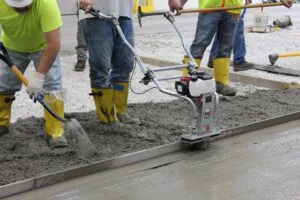What Kind of Sand Do You Use For Concrete Pavers?
When it comes to installing concrete pavers, choosing the right type of sand is crucial for achieving a successful outcome. While there are several different types of sand available for use in construction and landscaping projects, not all are created equal when it comes to paver installation. In this article, we’ll explore the different types of sand suitable for use in concrete pavers and offer tips for choosing the right sand for your project.
Types of Sand for Concrete Pavers
There are several types of sand commonly used in construction and landscaping projects, including masonry sand, concrete sand, and play sand. Each type of sand has its own unique characteristics that make it suitable for different concreting applications.
Masonry sand is a fine-grained sand that is typically used for bricklaying and other masonry work. It is relatively clean and free of debris, making it a good choice for filling the gaps between concrete pavers. However, masonry sand can be prone to erosion over time, which can cause pavers to shift and settle.
Concrete sand, as the name suggests, is typically used in the construction of concrete structures. It is a coarse-grained sand that is mixed with cement and water to create a strong, durable material. Concrete sand is also suitable for use in concrete paver installation, as it provides good drainage and helps to prevent erosion.
Play sand, also known as beach sand, is a popular choice for landscaping projects, such as creating sandboxes or decorative sand features. While it may seem like a tempting option for use in concrete pavers, play sand is not recommended, as it lacks the necessary grain size and structure to provide stability and prevent erosion.
Choosing the Right Sand for Concrete Pavers
When it comes to selecting sand for concrete pavers, there are several factors to consider, including grain size, texture, and colour. One of the most important considerations is grain size, as this will affect the stability and strength of the paver installation. The ideal grain size for sand used in concrete paver installation is between 0.3 and 0.5 millimetres, which provides a good balance of stability and drainage.
Texture is another important consideration, as the sand should be coarse enough to provide traction and prevent slipping, but not so rough that it scratches or damages the surface of the pavers. It is also important to choose a sand colour that complements the colour of the pavers, as this will help to create a cohesive and attractive finished product.
When sourcing sand for concrete paver installation, it is important to choose a high-quality product that is free of debris and contaminants. Look for sand that is washed and screened to remove any impurities, and avoid using sand that has been recycled from other construction or landscaping projects, as this can introduce unwanted materials and affect the stability of the paver installation.
Sand Preparation and Installation
Once you have selected the right sand for your concrete paver project, the next step is to prepare and install it properly. This involves excavating the area to the desired depth, ensuring that the base is level and compacting the soil to prevent settling.
Next, a layer of sand is spread evenly over the prepared base, with a thickness of around 1 inch. This sand layer provides a cushioning effect that helps to absorb pressure and prevent the pavers from cracking or shifting. The sand is then levelled and compacted using a plate compactor or hand tamper to create a stable base for the pavers.
Once the sand base is prepared, the pavers can be laid out in the desired pattern, leaving a small gap between each paver to allow for drainage and expansion. Finally, additional sand is swept into the gaps between the pavers, filling the joints and providing additional stability.
Regular Maintenance and Repair
To ensure the long-term durability and stability of your concrete paver installation, it is important to perform regular maintenance and repair. This includes sweeping or hosing down the pavers to remove any debris or dirt that may accumulate over time, as well as re-sanding the joints as necessary to maintain stability.
In addition, it is important to monitor the paver installation for any signs of erosion or settling, such as uneven surfaces or gaps between the pavers. If any issues are detected, prompt repair is essential to prevent further damage and maintain the stability of the paver installation.
Conclusion
Choosing the right sand for your concrete paver installation is essential for achieving a stable, durable, and attractive finished product. By considering factors such as grain size, texture, and colour, and selecting a high-quality sand product that is free of debris and contaminants, you can ensure that your paver installation will stand the test of time.
At Italcon, we offer a wide range of concreting services, including concrete paver installation. Our experienced and knowledgeable team of Melbourne concreters can help you select the right sand for your project, and ensure that your pavers are installed to the highest standards of quality and craftsmanship. Contact us today to learn more about our services and how we can help bring your concrete paver project to life.
Recent Blog Posts
Contact Us Today
If you’re looking for a passionate and experienced concreter in Melbourne, get in touch with Italcon today. We look forward to discussing your unique concreting or formwork project.


